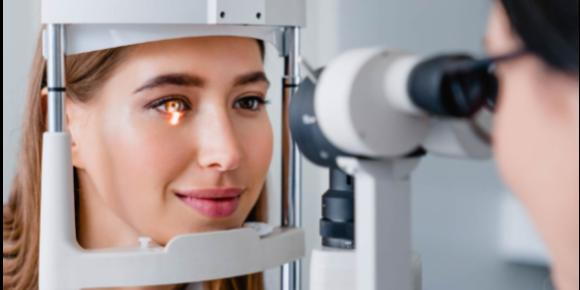Eye Define: definitions to common eye terms that confound the public and sometimes the professionals

- posted: Dec. 15, 2015
What is 20/20?
Eye doctors typically stop the vision exam at 20/20 normal because normal vision reduces the likelihood that eye pathology is present (at least at the very center of the visual pathway). But many people can see better than 20/20. So why don’t all eye doctors test beyond 20/20? That’s a tough one, I don’t know why we wouldn’t just find the best vision for every patient regardless if that is worse than normal, at normal, or better than normal vision. I know from working at several locations (that made me want to open my own place) that the tools to test visual acuity smaller than normal print, contrast sensitivity, and glare often aren’t even available at the eye doctor’s office.
Last month we defined one’s best vision with a reference to normal vision. Normal was actually developed by a Dutch eye doctor in 1862 and the standard was called 6/6 because the ratio is referencing a comparison to normal at 6 meters or 20 feet. This diagram attempts to demonstrate the difference between normal and better than normal vision. The red circle represents how far away a person with 20/20 normal vision (or the model eye) could stand away from the target and still see the detail needed to react sooner in sports (details like: the quarterback’s eyes, rotation of the pitch, spin on the serve, play action pass fake, swerve on the free kick, signal from the sideline…). In other words, in order to compete at the highest level, the first athlete in the drawing above is at a great disadvantage (worse than normal), the second athlete is still at a disadvantage even though s/he is considered normal, the third athlete can see detail 5 to 10 feet before the other two, and the fourth athlete has up to a 15-foot advantage. What if you could decide when to swing, slide, run, or dive 10-15 feet sooner?
Sports broadcasters talk about the “speed of the game” all the time; the game “slows down” with experience because getting reps on the field improves the mental processing of the visual information. What if you could train your brain and eyes to process the information faster, see the detail sooner and from farther away, and slow the game down before gaining on the field experience? YOU CAN! It’s called Sports Vision Training and it is entirely transferrable to the field, and they improve performance for athletes, first responders, professional drivers, and anyone that wants to see the world better. Stay tuned for more on sports vision, or check out our Sports Vision Training page to see how three main areas of vision (acuity/sharp vision, contrast/glare, and reaction time/visual processing/eye coordination) can be maximized with a quality 4Sight iCare annual wellness eye exam, quality ocular nutrition consultation/testing, and Sports Vision Training.
Hours of Operation
Closed
12:00 pm - 8:00 pm
10:00 am - 6:00 pm
10:00 am - 6:00 pm
10:00 am - 6:00 pm
9:00 am - 2:00 pm
Closed

